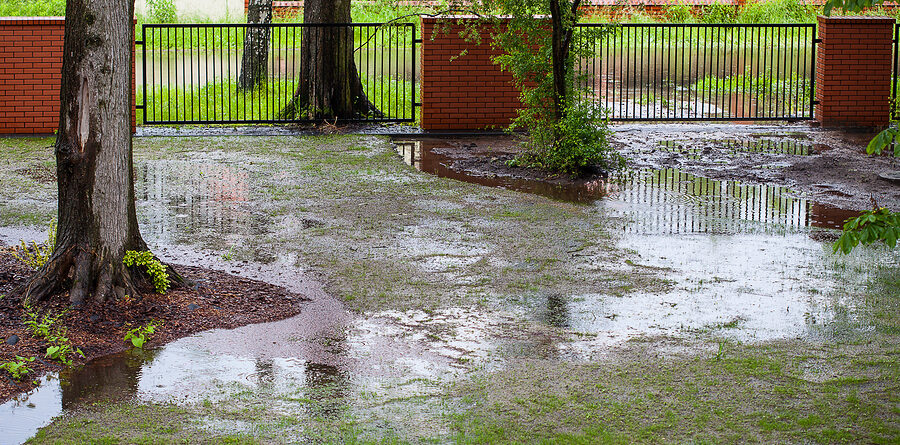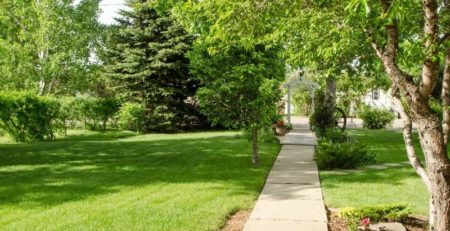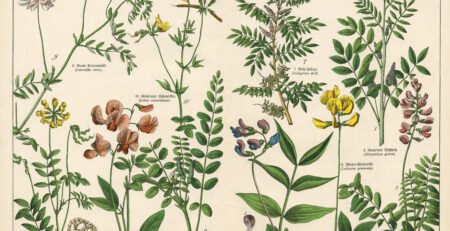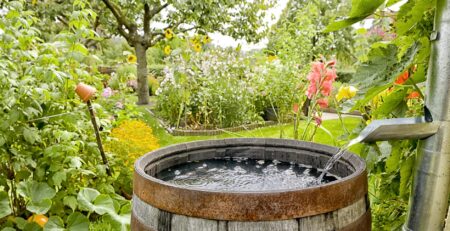How Will All This Rain Impact My Garden?
May was a very wet month for gardening. Even though the 7.8 inches we received was not record-breaking, it still left us with soggy soils, and soggy soils can be a problem for plants. Plant roots require oxygen to function properly, and they get that oxygen from the soil pore space. If the soil space is completely filled with water, oxygen cannot pass through and reach the plant roots. Soils that are completely saturated with water are said to be waterlogged. In waterlogged soils, plant roots will begin to die from lack of oxygen. Damaged roots cannot take up water and nutrients effectively, and the plant may begin to show signs of deficiencies. In the absence of oxygen, activity of anaerobic bacteria in the soil increases, leading to the accumulation of substances toxic to plants and “robbing” the soil of nitrogen that would otherwise be available to the plant. Nitrogen can also be washed from the soil by floodwaters, contributing to nitrogen deficiency.

A weakened root system and a wet environment makes a plant more susceptible to root rot and other plant diseases. Waterlogged soils can become compacted, making it harder for plants to recover.
It may take a while to determine whether your plants have suffered long term damage. Symptoms may be visible immediately or appear later in the growing season when metabolic demand is higher. One of the first things that gardeners often notice is the wilting and yellowing of foliage, especially during the heat of the day. This is often a temporary problem, and plant roots are able to recover as long as the soil dries out within a day or two. Other signs of root injury to look for include leaf curl or deformity, leaf drop, reduced leaf production and overall slowing of plant growth. Wet, humid conditions are conducive to the development of foliar diseases so monitor for signs of leaf spot diseases and stem and crown rots. Some plants may not revive and will have to be removed. https://pender.ces.ncsu.edu/2021/07/wet-weather-good-and-bad-for-gardens/
Although you cannot reverse damage done to the root system, you can take steps to create a favorable environment while your plants recover. Going forward, irrigate with care. Overwatering or underwatering will place additional stress on the plants. Avoid walking on wet soils to prevent compaction. Consider pulling mulch away from low lying or soggy areas to help soil dry faster; you can replace it when conditions return to normal. Soils that appear compacted may benefit from being aerated by hand. Dan Gill of LSU Ag Center recommends, “using a garden fork, drive the tines straight down into the soil and pull straight out in numerous places around the shrub. Do not dig with the fork. This provides air to the roots and encourages the soil to dry faster.” https://www.lsuagcenter.com/portals/communications/news/news_archive/2015/june/get-it-growing/soggy-soil-can-make-plants-sick
To combat foliar diseases, avoid practices that contribute to wetting of foliage. Try hand watering or drip irrigation rather than overhead sprinklers. Prune and space plants to promote good air circulation and to help them dry out after a rain. Avoid working with wet plants and remove any severely affected plants and properly discard them. If you notice leaf spotting or other signs of disease, the Texas Plant Disease Handbook can assist you in diagnosis. https://plantdiseasehandbook.tamu.edu/
Over time, plants may begin to exhibit signs of nitrogen deficiency or other nutrient imbalances. Many sources caution against immediately adding fertilizer to plants with root stress. For trees and woody ornamentals, it is not recommended to fertilize until the following growing season. https://portal.ct.gov/-/media/caes/documents/publications/fact_sheets/plant_pathology_and_ecology/excesswaterproblemsonwoodyornamentals030215rpdf.pdf?la=en&hash=03B4124A54FCBAB1CA115122C2F39E2C#:~:text=Symptoms%20of%20excess%20water%20depend,in%20some%20cases%2C%20plant%20death.
For vegetable crops, many sources recommend applying organic or slow- release forms of nitrogen to replace soil losses once the soil has dried.
A word of caution. Floodwater can be contaminated with a variety of things including sewage, farm run-off, industrial run-off and other pollutants. Do not harvest produce that is at or near harvest, and has been exposed to flood waters. Fresh produce that was submerged by flood waters should be discarded.
For additional help with coping with your wet landscape, visit the following sites:
https://www.lsuagcenter.com/profiles/jmorgan/articles/page1618857911417
https://www.johnson.k-state.edu/lawn-garden/agent-articles/miscellaneous/waterlogged-soils.html
https://vegcropshotline.org/article/waterlogged-soils-and-plant-growth/













